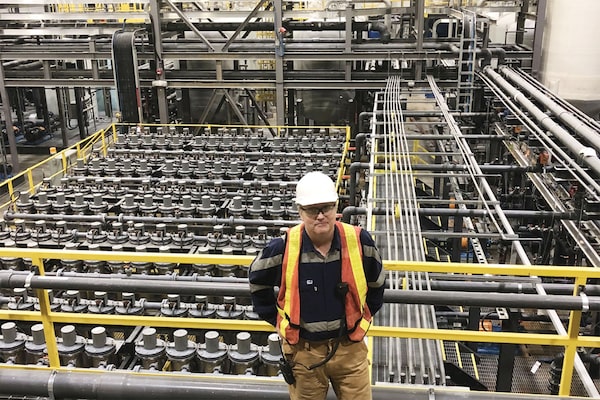
David Kratochvil, president and CEO of BQE Water, at the Selen-IX treatment plant in Northern B.C.BQE WATER
Among the mining industry’s present-day challenges is a requirement to develop projects in an environmentally responsible and socially acceptable manner. David Kratochvil, president and CEO of BQE Water, is convinced clean water plays an essential role in achieving both goals.
“Modern regulations recognize the storage of contaminated mine water onsite as an environmental and financial liability and are imposing new stringent discharge limits for contaminants that pose a threat to aquatic life and quality of drinking water,” he says. “One example is the new limit for selenium set at one to ten parts per billion.”
Selenium levels above these values can trigger chronic toxicity leading to genetic mutations in fish. With social acceptance becoming more paramount, mines can no longer rely on diluting the treated water in the receiving environment to meet discharge limits although that may be legally permissible, explains Dr. Kratochvil. “Social acceptability also means that mining projects are encouraged to recycle water and chemicals, as well as minimize the generation of waste.”
To address these challenges, industry teams up with innovators. For example, the quest to remove selenium from mining wastewater brought together global gold producer Centerra Gold and BQE Water, a B.C.-based specialist in mine water treatment.
The result? The successful implementation of the first large-scale plant using a non-biological treatment technology called Selen-IX, which “is disrupting the selenium treatment space currently dominated by biological systems,” he says. “The innovative process results in much lower end-of-pipe selenium levels without having to rely on dilution, can operate seasonally or intermittently and, most importantly, produces a stable and non-toxic residue that has re-use potential in steel manufacturing.” Dr. Kratochvil adds that Selen-IX won the company the 2022 Canada’s Clean50 award for top project as well as the Engineers and Geoscientists of British Columbia’s 2021 environmental award.
Another example of recycling and waste reduction is the SART process that recovers cyanide for re-use in gold extraction while enabling commercial production of high-quality base metal concentrates, such as copper and zinc from precious metals deposits, says Dr. Kratochvil. “It was invented in the late ‘90s by Lakefield Research in Ontario and applied for the first time in 2008 on a large industrial scale in North America by BQE Water. The process is now part of many gold mining projects globally.”
The technology continues to evolve, with BQE Water processes recently achieving the destruction of thiocyanate with concurrent recovery of additional cyanide. As an undesirable byproduct of gold extraction from deposits rich in sulphur minerals, thiocyanate is a very stable contaminant that does not degrade even over decades and can cause effluent toxicity, notes Dr. Kratochvil.
“As the geology of gold deposits gets more complex, it’s important to deploy technological tools that can create better outcomes for the industry and the environment,” he says.
“Successful global decarbonization relies on environmentally responsible mining to supply important metals, but without viable solutions for [water contaminants], we may not reach carbon goals or we do so with great risks of harming the environment.”
Advertising feature produced by Randall Anthony Communications. The Globe’s editorial department was not involved.